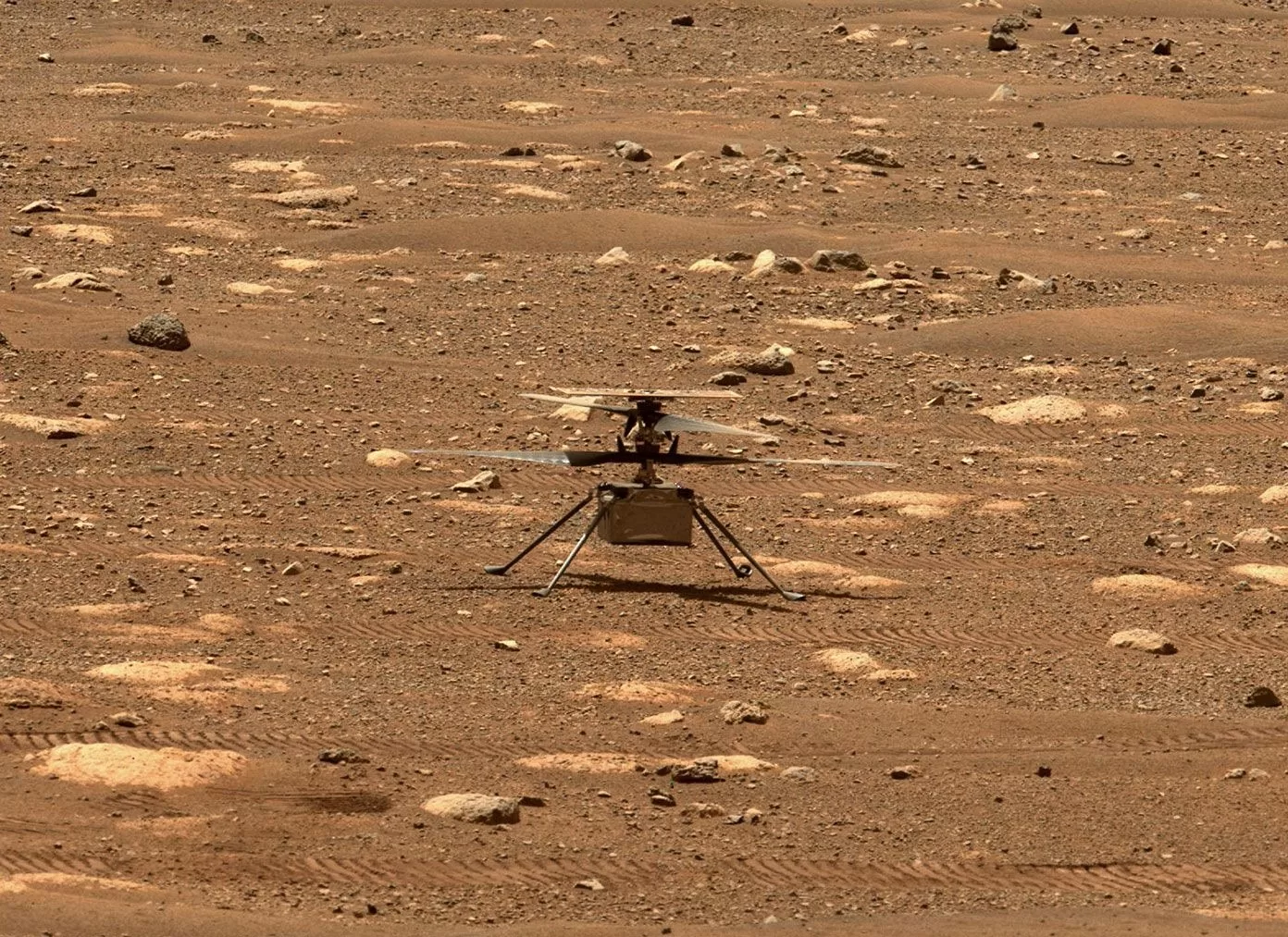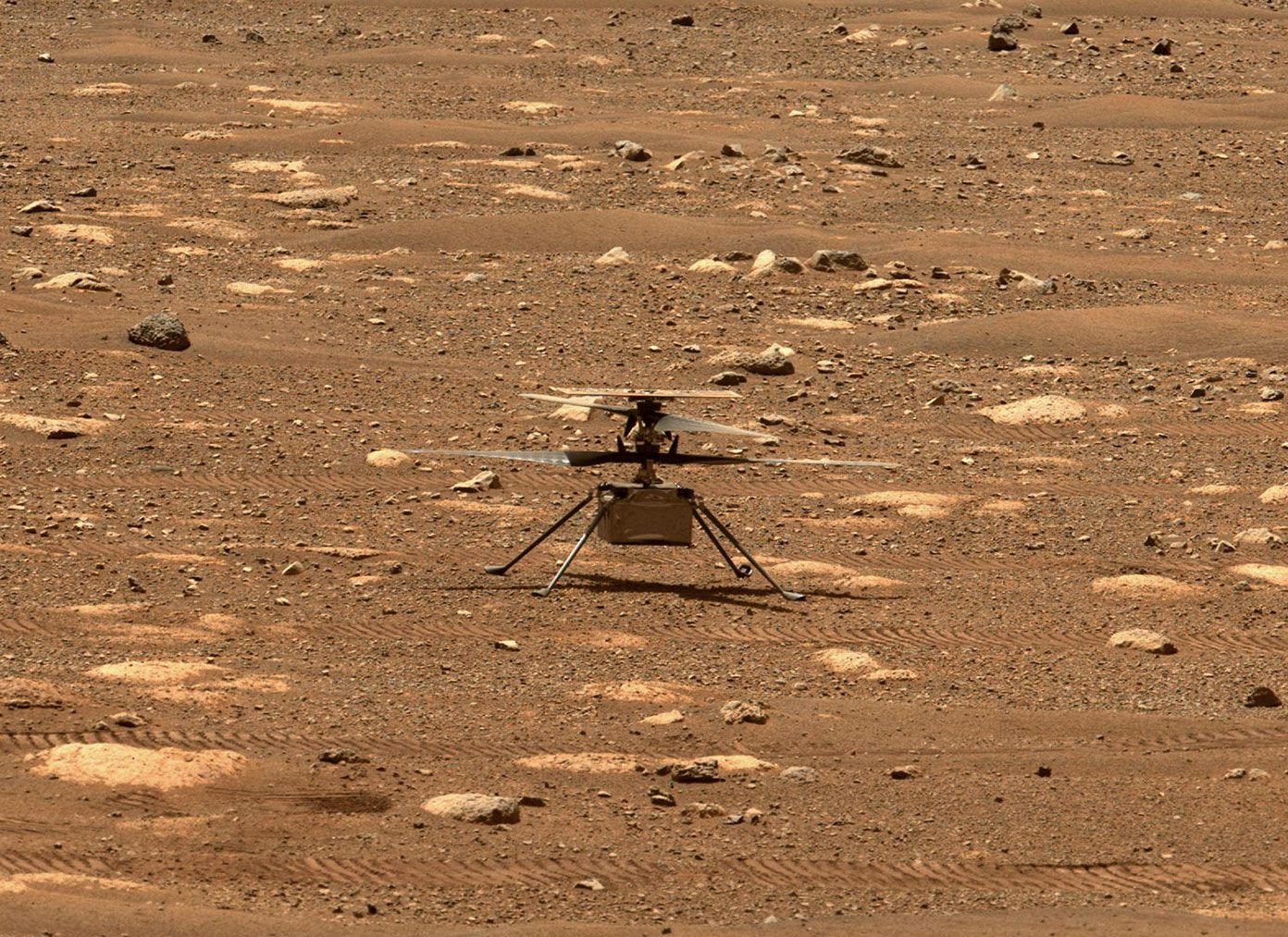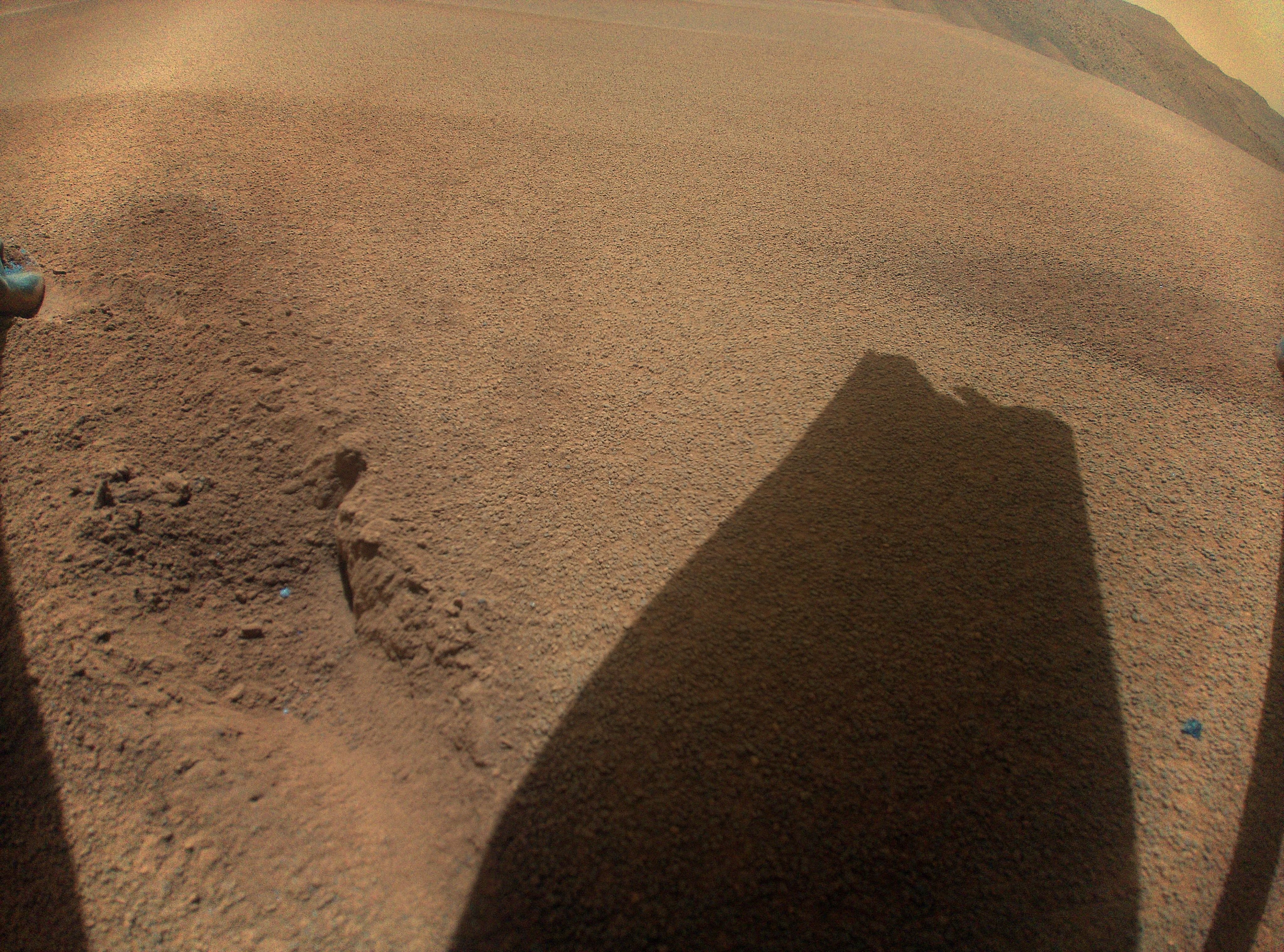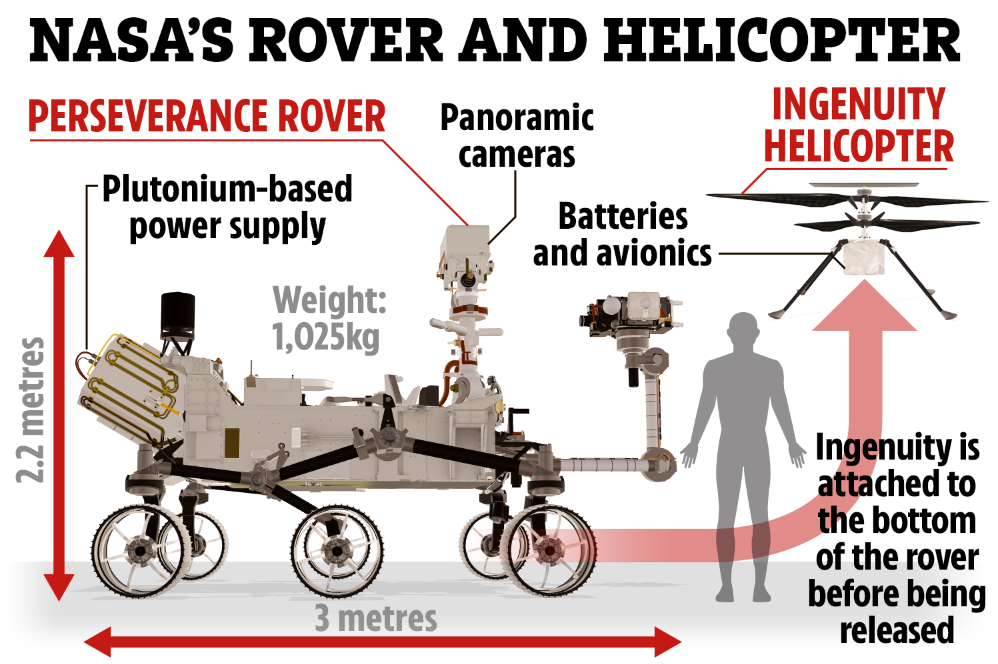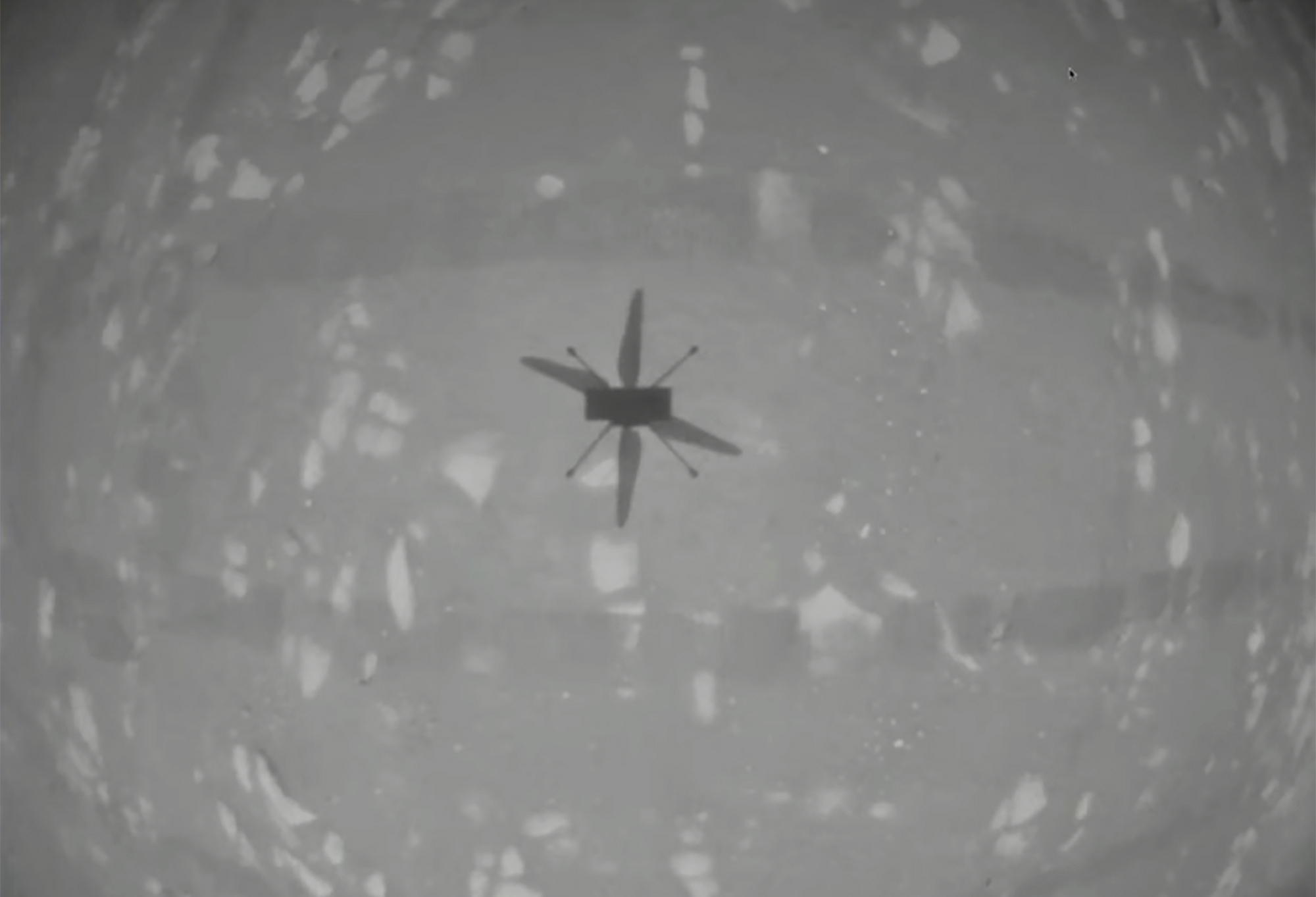Ingenuity became the first aircraft to achieve powered flight on another planet in 2021.
The US space agency said Ingenuity made an “emergency landing” during its second-to-last flight.
During its last flight on January 18, the craft lost contact with Perseverance when it was flying about 3ft (1m) above the ground while descending to land.
Imagery taken days later showed damage to one of its carbon fiber rotorblades.
An image released by NASA that was taken by Ingenuity’s onboard camera captured the aircraft’s shadow on the Martian surface, appearing to show one of its rotorblades broken.
Perseverance, which carried Ingenuity on its belly, landed on the Martian surface in February 2021.
We’re investigating the possibility that the blade struck the ground.Bill Nelson
What began as a planned 30-day mission to demonstrate five short flights on Mars turned into a nearly three-year scientific endeavour involving 72 flights.
Ingenuity flew a combined distance in its various flights that was 14 times farther than originally planned.
“It is bittersweet that I must announce that Ingenuity, the ‘little helicopter that could’ – and it kept saying, ‘I think I can, I think I can’ – well, it has now taken its last flight on Mars,” NASA Administrator Bill Nelson said in a video posted on social media.
“We’re investigating the possibility that the blade struck the ground,” Nelson said.
Following Ingenuity’s debut flight in April 2021 – buzzing above the surface of Mars for 39 seconds – NASA officials hailed the achievement by the 4-pound (1.8-kg) solar-powered aircraft.
They said that it would help pave the way for a new mode of aerial exploration on the Red Planet and other destinations in the solar system, such as Venus and Saturn’s moon Titan.
Ingenuity resembles a box with four legs and a twin-rotor parasol, designed for flight in the thin Martian atmosphere that requires more power than similar craft on Earth.
On that initial flight, it climbed as programmed to a height of 10ft (3m) above the surface, then hovered in place while pivoting 96 degrees before making a safe touchdown.
NASA compared it to the Wright Brothers’ 1903 historic first controlled flight of their motor-driven airplane near Kitty Hawk, North Carolina.
The helicopter’s success in early demonstration flights earned it a more productive role on Mars, helping scout location targets for Perseverance with its tiny onboard camera.
The craft survived almost 1,000 Martian days, which included the planet’s frigid winter seasons.
Engineers will run final tests on Ingenuity and download remaining images from its onboard computer.
Perseverance is currently too far away to photograph Ingenuity’s final resting site.
Perseverance – What’s on board?
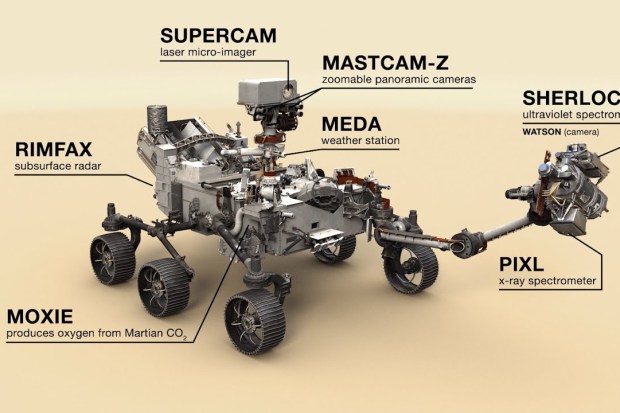
Perseverance boasts a total of 19 cameras and two microphones, and carries seven scientific instruments.
- Planetary Instrument for X-Ray Lithochemistry (PIXL)
An X-ray “ray gun” that will help scientists investigate the composition of Martian rock.
2. Radar Imager for Mars’ subsurface experiment (RIMFAX)
A ground-penetrating radar that will image buried rocks, meteorites, and even possible underground water sources up to a depth of 10 metres (33ft).
3. Mars Environmental Dynamics Analyzer (MEDA)
A bunch of sensors that will take readings of temperature, wind speed and direction, pressure, and other atmospheric conditions.
4. Mars Oxygen ISRU Experiment (MOXIE)
An experiment that will convert Martian carbon dioxide into oxygen. A scaled-up version could be used in future to provide Martian colonists with breathable air.
5. SuperCam
A suite of instruments for measuring the makeup of rocks and regolith at a distance
6. Mastcam-Z
A camera system capable of taking “3D” images by combining two or more photos into one.
7. Scanning Habitable Environments with Raman and Luminescence for Organics and Chemicals (SHERLOC)
From Baker Street to Mars: Sherloc contains an ultraviolet laser that will investigate Martian rock for organic compounds.
